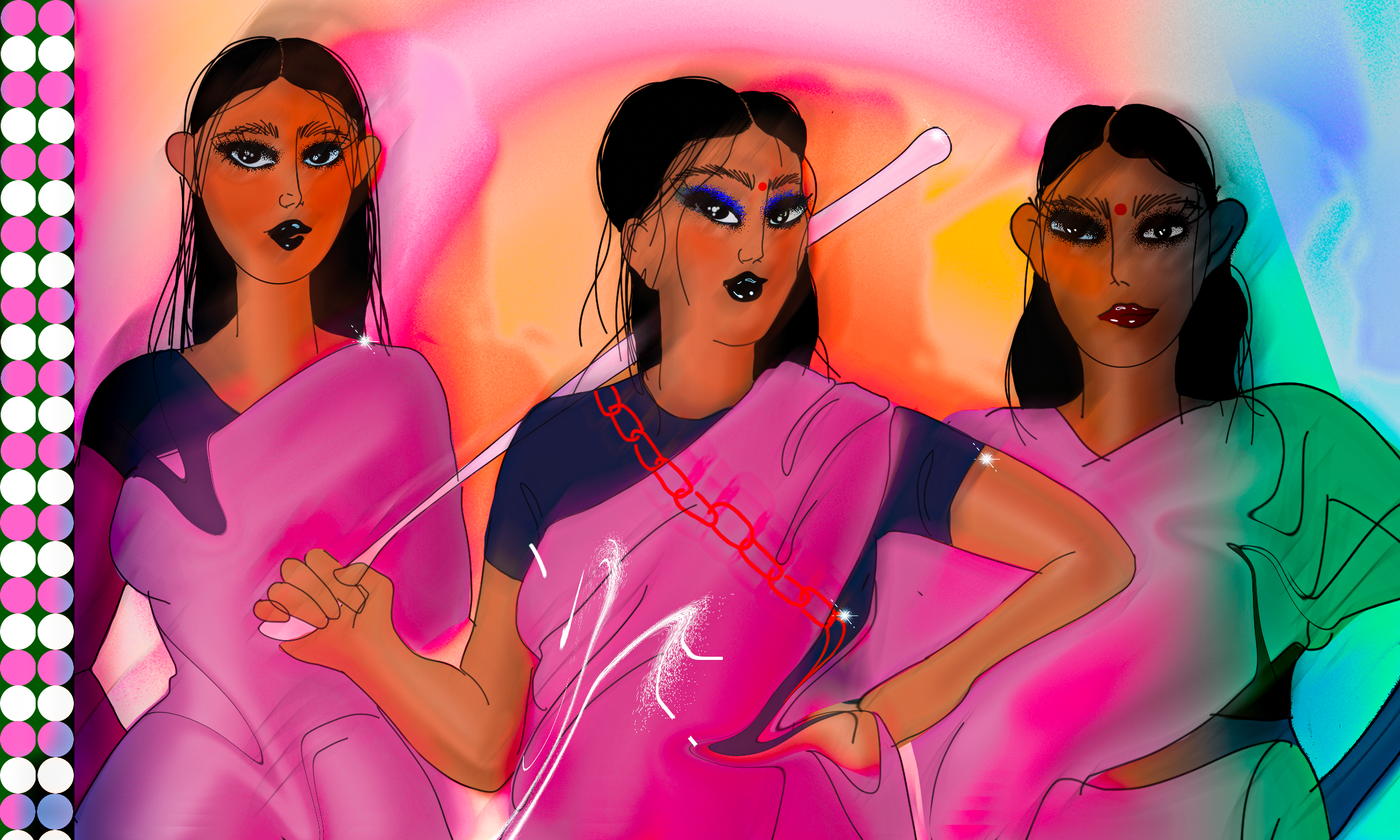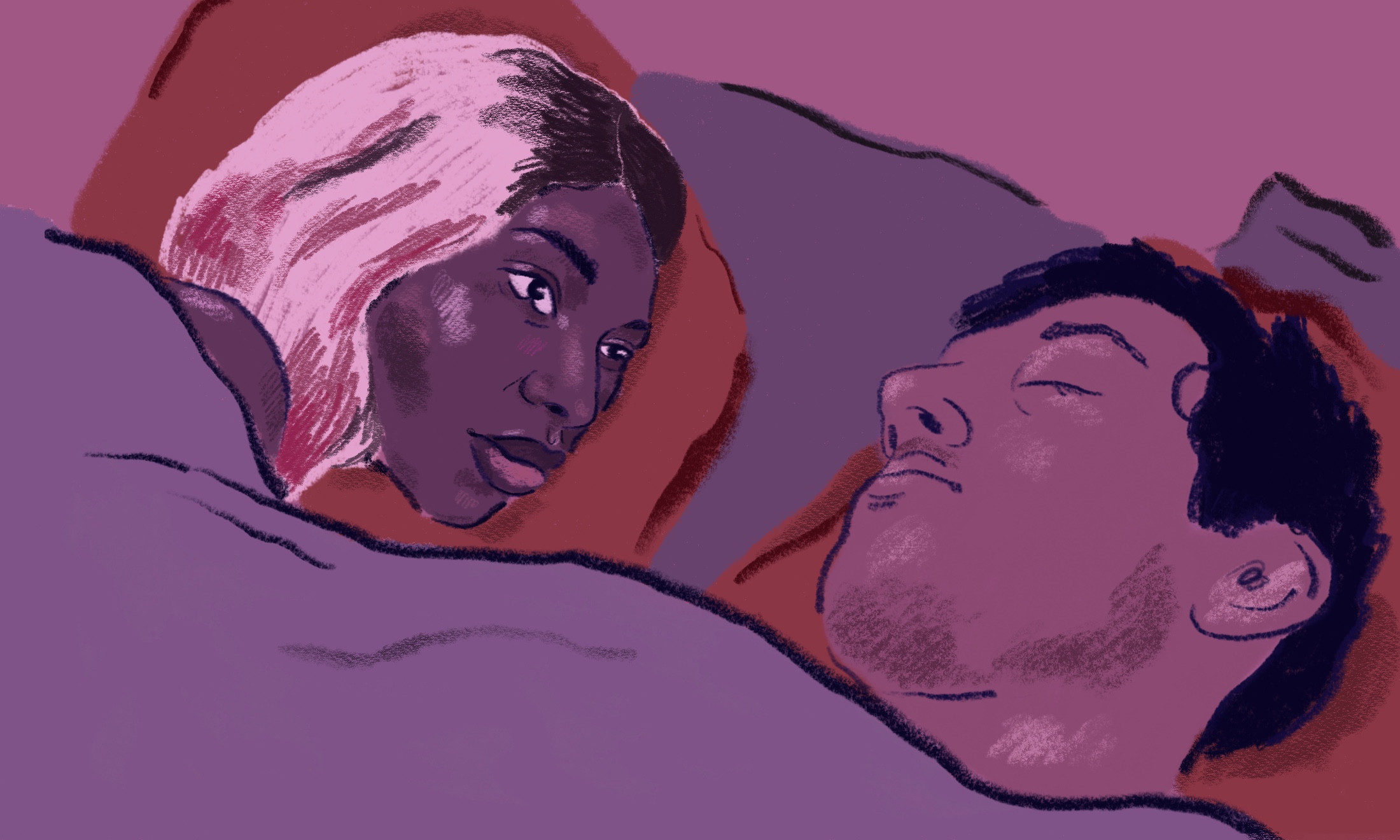
In 2013, 23-year-old Priyanka began an online relationship with a man who lived on the other side of the Atlantic, in the US. Their relationship originally started off as a friendship, but she soon became infatuated by him. He was clearly jealous of Priyanka’s working lifestyle, and became possessive and controlling. He began cyberstalking her, and demanding that she change her schedule to suit him.
It wasn’t until a year later when she visited him in the US that he assaulted her. She had found evidence in his phone of his unfaithfulness. When she confronted him, he grabbed her by the neck and accused her of breaching his privacy. When she was back in the UK, he continued to openly threaten her.
Priyanka became scared of him, and pretended to be happy to prevent him from being angry, abusive or violent. She tells me: “He had explicit images of me, and he used this in attempts to ruin my life. I thought he was going to kill me”. He started to surveil her; asking her to Snapchat and call him every minute of the day. In broad daylight in front of onlookers, after being blackmailed to come back to the US in 2016, he dragged her to his house by her neck whilst screaming that she was a bitch. That day, he continued to physically assault her.
“My life flashed before my eyes. My mum didn’t know I was there”
Priyanka’s case is not an anomaly. An estimated 1.2 million women and 713,000 men experience domestic abuse each year and this form of violence is disproportionately perpetrated against women. The use of social media in the abuse perpetrated against Priyanka is also a common pattern: online abuse is present in the overwhelming majority of domestic violence cases. Priyanka’s partner attempted to control her life through commandeering her online platforms, threatening to leak explicit images of her, and calling her constantly, to the extent that her phone battery died.
The growth of social media and the Internet has allowed individuals to perpetrate abuse in ways that were previously much harder to access. The use of online platforms allows for a range of behaviours which can be perpetrated at the swipe of a touchscreen, including making threatening phone calls, harassing through social media sites and cyberstalking, enacting revenge porn, exposing private information or ‘doxing’, impersonation and false representation, catfishing, and other forms of controlling and coercive behaviours.
“Social media allows individuals to harass, intimidate, control and abuse a person with relative impunity”
Cyberstalking has been defined as “the use of the internet, email or other electronic communication device to create a level of intimidation, harassment, and fear in one or more victims”. It is essentially an extension of “traditional” stalking as it allows the perpetrator to stalk victims whether they are outdoors, or in the perceived “safety” of their own home. Cyberstalkers tend to stalk their victims via social networking sites, dating apps, and through sending texts and emails. An increasing amount of social networking sites allows for users to tag their locations in posts i.e. geo-tagging, as well as tagging their friends, which makes it easier for them to be found. Applications such as Snapchat have the functionality to reveal an individual’s exact location via Snap Map, as well as detailing the specific activity they are engaging in such as sleeping, driving, or flying in a plane. Social media, currently running un-checked and largely un-moderated by tech companies, allows individuals to harass, intimidate, control and abuse a person with relative impunity.
It is important to acknowledge that certain cyberstalking behaviours may not be perceived as “serious” due to a normalisation of misogynistic treatment of women in online spaces. A research study found that students continued to engage in surveillance activity on social media even when acknowledging their activity to be inappropriate, such as an ex creating an Instagram account to “pree” their former partner. It’s also worth noting the widely used phrase “Facebook stalking” to describe a spectrum of behaviours ranging from snooping on friends, family, partners and ex-partners’ Facebook profiles, to systematically mining through every single photo, post and comment. The normalisation of these practices make it difficult to bring about change to tackle this issue.
“Online abuse can ruin an individual psychologically, financially and socially”
I asked numerous colleagues if domestic abuse could happen online and the majority of them said no – with their reasoning being “it’s online”. This sort of thinking prevents victims from coming forward in the first place – due to fear of the police and the public questioning their experience, and thus being taken less seriously.
In the digital age we live in, image is everything and online abuse can ruin an individual psychologically, financially and socially while the perpetrator remains anonymous. A prime example is the case of Heroy Bygrave, who after a breakup sent nude images of his ex-girlfriend to her boss, which resulted in her getting sacked. A more recent case of online abuse is the experience of Chrissy Chambers, and American YouTuber who made legal history in the UK by becoming the first revenge porn survivor to win civil damages. Her ex-boyfriend had recorded films of them engaging in sexual activity without her consent and uploaded them on pornography websites. This abuse led to her becoming an alcoholic and she received a diagnosis of Post-Traumatic Stress Disorder (PTSD) and depression. After the videos were leaked, Chambers was subjected to a barrage of abusive messages and threats and furthermore, and her Youtube career was impacted, as brands chose not to work with her.
Cyberstalking and other forms of online abuse can be classed as an offence under the Protection from Harassment Act 1997 and the Malicious Communications Act 1988, and revenge porn is now an offence under The Criminal Justice and Courts Act 2015. However, Cyberstalking has no legal definition or legislation, and a lot of stigma still exists around reporting this type of abuse. After Priyanka and her ex-partner broke up, he called her numerous times on different numbers threatening to kill her and get his revenge – yet she didn’t report it to the police. Priyanka asks me: “What can the police do?”
“Priyanka’s experience affected her social life, her sex life, and her mental health”
Fortunately, support systems are available, such as the Cybercrime Awareness Clinic which provides awareness and advice to victims of all forms of cybercrime, including cyberstalking. Other helplines include the National Stalking Helpline and Scared of Someone.
Abuse and harassment has a significant impact on an individual whether online or offline. Priyanka’s experience affected her social life, her sex life, and her mental health. Online platforms should enable women to express their voices and opinions, and new technologies bring more opportunities to create systems which ensure that abusive content in virtual spaces can be limited, and ideally eliminated. Women shouldn’t have to go offline to avoid abuse and be safe from potential cyberstalkers, much like women shouldn’t be expected to dress “appropriately”, stay indoors, and not travel home alone at night to avoid sexual assault. It is vital that cyberstalking is acknowledged as a part of a spectrum of violence against women. A change of perspective is needed in order to shift the current narrative which permits social media giants to shirk their responsibility to online communities in the name of “freedom of expression” for perpetrators of violence.









